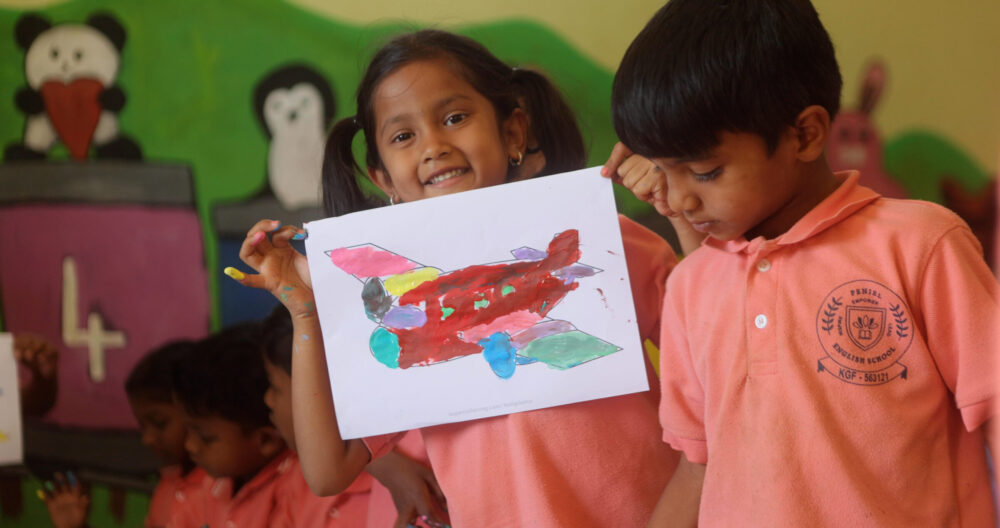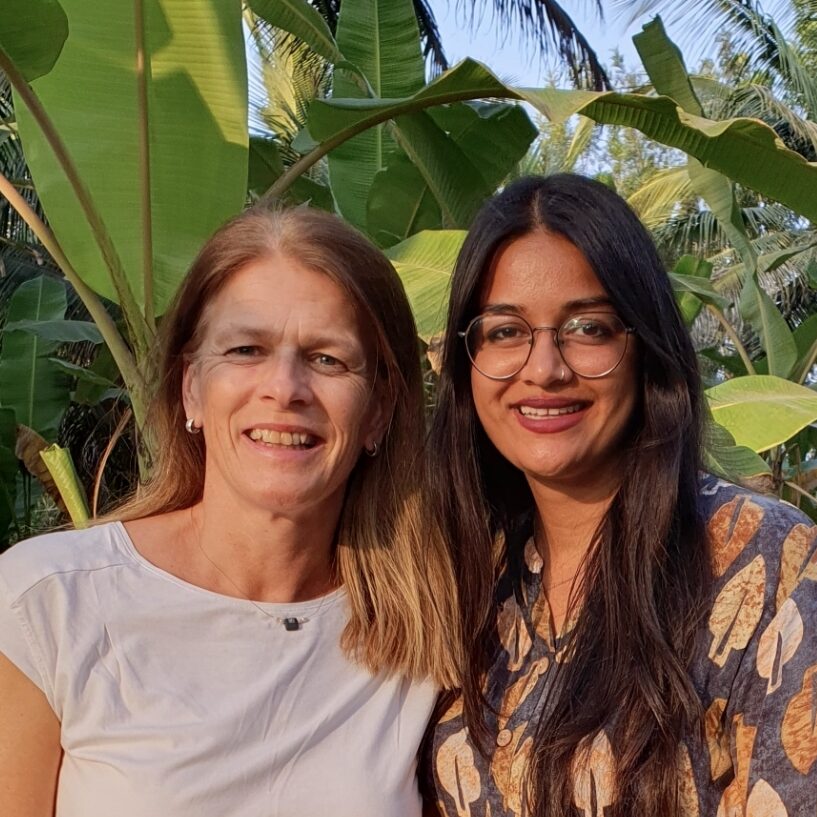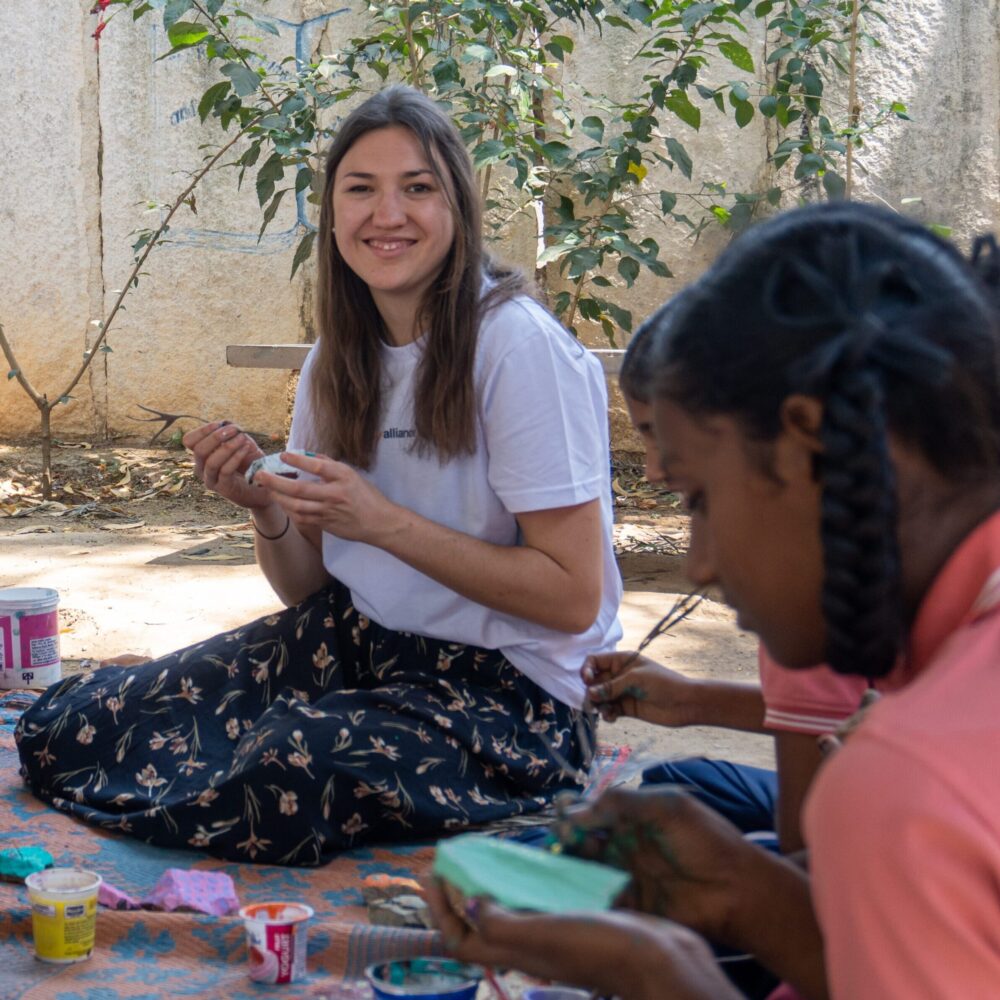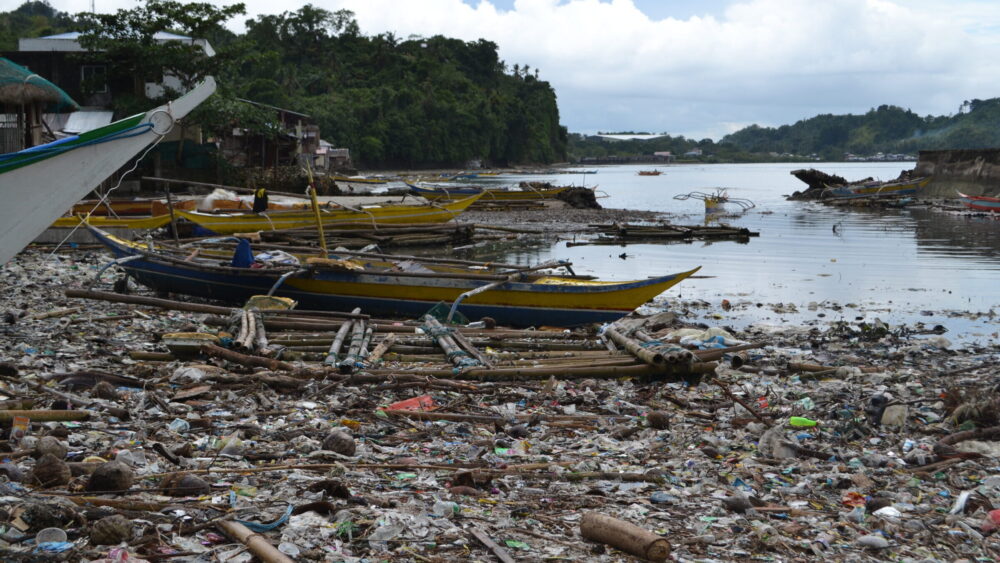
Holistic School, Krishnapuram
Access to education is particularly difficult for traumatized children, who are often limited in their cognitive development because their experiences impair their development and make it difficult for them to learn and concentrate. These children find the support they need at our project. Through specially tailored educational programs, they are not only accompanied on their educational path, but are also supported holistically.

Project background
With about 1.46 billion inhabitants, India has the largest population worldwide. Especially in the last 40 years a strong population growth could be observed, where the number of inhabitants has almost doubled. About 25% of the Indian population is under 15 years old. This demographic development holds great potential for economic growth. However, in order to exploit this potential, more education and employment opportunities are needed. For although India is undoubtedly one of the economic up-and-comers, the growing middle and upper classes still face the world’s highest number of absolutely poor people. In addition, about a quarter of Indian children have no access to education. Especially in the slums and remote villages, the percentage is significantly higher.
For traumatized children in particular, access to education is even more difficult, as they are often behind their peers in their cognitive development, as their memories are filled with experiences that prevent them from learning. The linear-oratorical and memorizing-learning style of teaching, characteristic of the Indian education system, is therefore less than optimal.
Target group
The target group are children from marginalized, impoverished, and rural communities who otherwise lack access to educational systems and quality education.
Project goals
The main goal of the project is to provide children from difficult backgrounds with access to holistic education. Most of the children supported by the project come from extremely unstable backgrounds associated with material poverty, abuse, abandonment or alcoholism. Supporting these children in their development by promoting creativity and working through their traumas with alternative therapeutic methods is the goal of the project. Since traumatized children often have difficulties with the frontal teaching that is common in India, the already existing School focuses on alternative learning methods – combined with a holistic approach. This offer is now to be supported and extended by various measures and in particular the equipment of different learning rooms.
One of the most important measures is the construction and furnishing of a science room to enable the children to learn kinesthetically in addition to theoretical lessons, and the construction and furnishing of an arts room and a crafts room.
In order for the children to have a safe space to talk about their problems and to work through their fears and traumas, a special therapy room is planned.
To further enhance the children’s learning, a school library and computer lab will be established and equipped.
The construction of a gymnasium will promote motor development and strengthen emotional balance, and the children will be able to learn important skills such as teamwork. In addition, the gymnasium will be used as a community room outside of school hours.
The purchase of two school buses will enable children from remote villages to attend classes.
To ensure the sustainability and financial independence of the project, nearly 1 hectare of land is to be converted into a school farm. On the one hand, this will help to provide the students with healthy food and, at the same time, generate income for the school through the sale of the produce. By drilling wells and equipping the school with water filters, the drinking water supply can also be secured.
Sustainability is a matter close to the school’s heart. For this reason, the school also offers upcycling workshops to raise awareness of waste avoidance and the careful treatment of nature.
WHAT ARE YOU SUPPORTING
With your support, we want to enable the school to set up various learning rooms, purchase two school buses and build the school farm.














